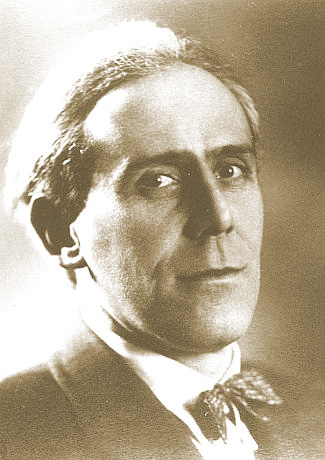Emil Julius Gumbel, the developer of the Gumbel distribution of statistical extremes,
was born in Munich, Germany, on July 18, 1891, and passed away on September 10,
1966, at age 75.
He studied at the prestigious Kaiser-Wilhelms-Gymnasium, graduating in July 1910.
He then pursued his studies in mathematics and political economy at the Ludwig-Maximilian
University in Munich. He specialized in statistics and obtained a diploma in February 1913.
For the following two semesters, Gumbel wrote his thesis and on 24 July 1914 he
received his doctorate in political economy with the highest honors.
In 1923 Gumbel received his habilitation at Heidelberg,
becoming a professor of mathematical statistics. The hostility of a number of his
colleagues and students to his ideas and political activity was to plunge his university career
into chaos. He was suspended several times,
leaving Germany for Moscow. Despite his nomination as professor extraordinarius, Gumbel was
eventually ousted from his position at Heidelberg on the eve of the Third Reich.
He then found
refuge in France, where he was invited to work at the Institut Henri Poincaré.
Gumbel's French period is arguably his most fertile one, with his scientific activities hardly
affected by political turmoil. During the 1930s he remained an active anti-Nazi militant,
together with other exiled intellectuals. When he went to France, he took with him a new idea,
that of extreme values, which was to occupy his thoughts for the rest of his life and ensure his
enduring reknown.
In developing his "theory of the maximum value," Gumbel rediscovered, extended and correlated several
publications on extremes carried out at the turn of the century
by various authors who were apparently unaware of
each other's work.
The theoretical structure was completed in 1943 with the statement and proof of the theorem on the
limit of extremes, in central limit style, by B. V. Gnedenko. There are only three kinds of limit laws
possible for the maximum value.
One of the three limiting
distributions had been found by M. Fréchet in 1926.
The second was named after Weibull (1887-1979), a Swedish engineer, who applied it to problems
of confidence from the mid 1930s.
Gumbel stressed the theoretical and practical interest of the third distribution, which
was logically given his name. The Gumbel distribution has the formula: G (x) = 1 - e-e-y
Gumbel, by his interdisciplinary and transnational skills,
his polyglot abilities, and his applied mathematics knowledge,
was able to bring to light and exploit a body of theoretical work,
applying his results to several areas.
From 1937 on, first in France and after 1940 in the United States,
he became an expert forecaster, first of river floods
and later of drought levels and other extreme climatic phenomena.
Unable to find a university position in the United States, Gumbel acted as a consultant to different government organizations. It was only in 1953 that he was appointed to a chair at Columbia University.
Gumbel's contributions are summarized in his book Statistics of Extremes,
published in New York in 1958. The book, the first treatise devoted entirely to the field,
was widely disseminated, with further editions in
1960 and up to 1979. A Japanese translation appeared in 1963
and a Russian edition, under the direction of Gnedenko, in 1965.
This contribution was written by
Jana DaSilva
based on the available online literature.

